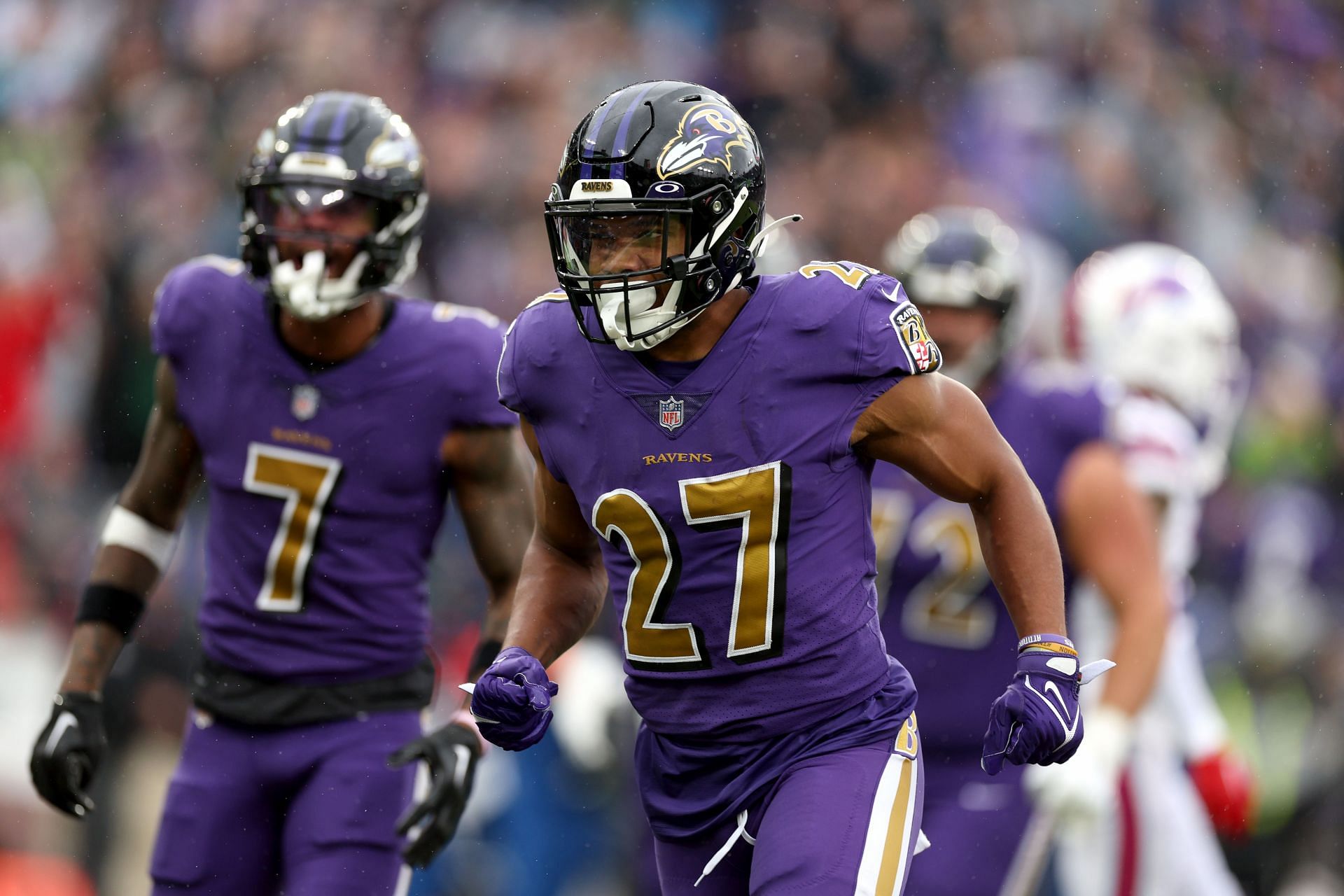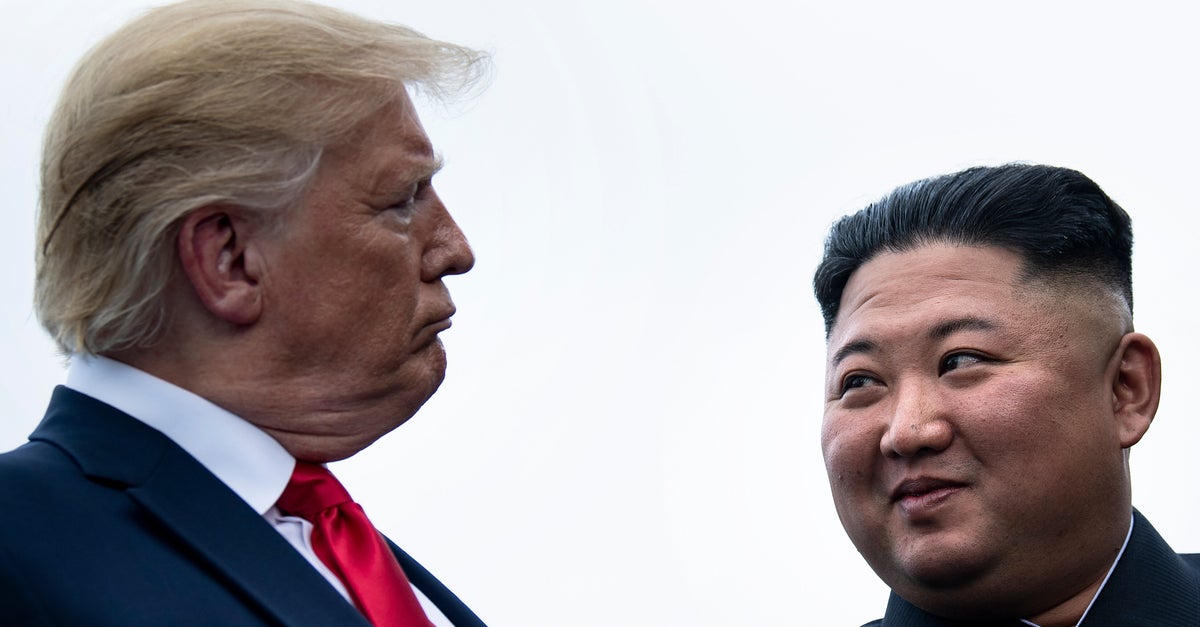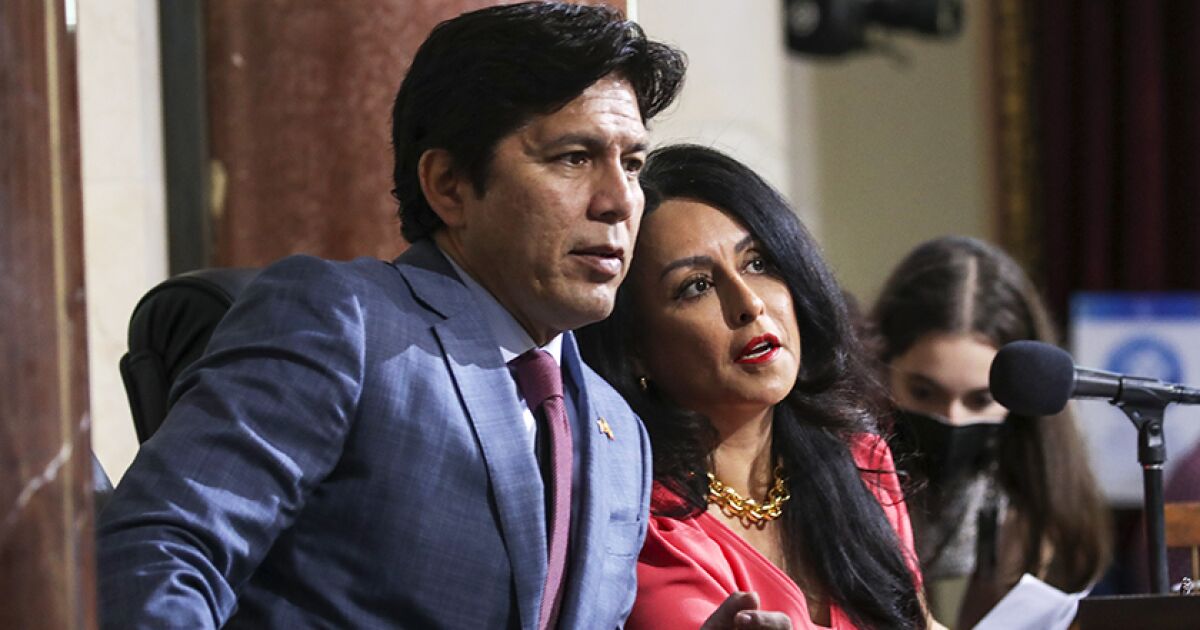PHOTO ILLUSTRATION BY DAN DAO / GETTY IMAGES
When former President Donald Trump was in the White House, he bragged on Twitter, “As long as I campaign and/or support Senate and House candidates (within reason), they will win!” And he was right: In Republican primaries in 2018 and 2020, a Trump endorsement was like a golden ticket to the general election.
Now that he is out of office, though, Trump’s endorsees are not winning as often as they used to — a potential concern for the ex-president as he considers another presidential campaign in 2024. But that doesn’t mean his influence in the party is waning. Rather, the decline in Trump’s endorsement win rate probably has more to do with him picking tougher fights than with voters turning their backs on him. And in absolute terms, his endorsees still win far more often than they lose. So while there are signs that Trump’s influence within the GOP is slipping, he remains a powerful figure within the party.
On the surface, Trump’s endorsement record is almost perfect. According to data collected by FiveThirtyEight, the ex-president has endorsed 189 Republican candidates in Senate, House and gubernatorial primaries that have taken place through Aug. 23. And 180 of them — 95 percent — won the Republican nomination or advanced to the general election.
But we shouldn’t take that statistic at face value. A lot of these endorsements were of candidates who would almost certainly win anyway — an example of Trump padding his win rate to exaggerate his clout. For instance, 61 of the candidates Trump endorsed faced no opposition, and another 84 were incumbents, who rarely lose their primaries. In fact, only one Trump-endorsed incumbent lost: Rep. Madison Cawthorn.
That means of Trump’s 189 endorsements, just 44 were of nonincumbents in contested primaries — the riskiest kind of endorsements to make. And only 36 of these candidates won — giving Trump a lower win rate of 82 percent.
In riskier races, Trump’s endorsees didn’t do as well
How candidates endorsed by former President Donald Trump have fared in Republican primaries for Senate, House and governor, through Aug. 23, 2022
| Type of Primary | Type of Endorsee | Endorsements | Wins | Win Rate |
|---|---|---|---|---|
| Contested | Incumbents | 84 | 83 | 99% |
| Nonincumbents | 44 | 36 | 82 | |
| … who primaried incumbents | 10 | 6 | 60 | |
| … in open seats | 34 | 30 | 88 | |
| Uncontested | Incumbents | 60 | 60 | 100 |
| Nonincumbents | 1 | 1 | 100 | |
| Total | 189 | 180 | 95 |
An 82 percent win rate would be the envy of most endorsers, but for Trump, it’s a bit of a letdown. In 2020, those same types of candidates won 96 percent of their races (24 out of 25), and in 2018, his win rate among this group was 89 percent (17 out of 19).
One big reason for this decrease is that Trump took a different endorsement strategy this year: He actively tried to defeat many sitting governors and members of Congress, who of course are very difficult to beat. In total, Trump endorsed 10 nonincumbents who were running against incumbents, and just six of them won or advanced to the general election — a 60 percent win rate that goes a long way toward explaining Trump’s lower overall win rate in 2022.
Still, more of these bets paid off than didn’t, and notably, Trump used these endorsements to reshape the party in his image. In total, six of the incumbents he targeted for defeat supported the effort to impeach him for his role in inciting the Jan. 6 attack on the Capitol, and only two of them survived: Alaska Sen. Lisa Murkowski and Washington Rep. Dan Newhouse.
In other words, Trump embarked on a crusade this year to rid the party of his critics, and it was largely successful.
Trump’s win rate in incumbent-less contested primaries (30 out of 34, or 88 percent) was also lower than in 2020 (96 percent), but it wasn’t unprecedented; he had the same win rate in these types of primaries in 2018. This may have been because Trump endorsed some pretty flawed candidates this cycle, too. Three of the four losers in this category faced allegations of sexual misconduct. Eight women accused business owner Charles Herbster (who ran for Nebraska governor) of unwanted sexual advances. Former Missouri Gov. Eric Greitens (who ran for Senate) allegedly hit, groped and blackmailed a woman he was having an affair with, in addition to allegedly coercing her to perform oral sex. And former state Rep. Vernon Jones (who ran for Georgia’s 10th District) was accused of rape.
Some of these failed endorsements also suggest (surely to Trump’s chagrin) that, when the Republican establishment decides to go toe-to-toe with him, the establishment sometimes wins. In the Nebraska gubernatorial primary, the state’s outgoing governor supported University of Nebraska Regent Jim Pillen, who wound up defeating Herbster. And in the Missouri Senate race, major Republican donors and allies of Senate Minority Leader Mitch McConnell spent millions of dollars to stop Greitens.
On the other hand, several of Trump’s losses in this category were limited to Georgia, a particularly brutal state for Trump this cycle. Republicans there rejected not only Jones but also attorney Jake Evans (who ran in the 6th District) and former Sen. David Perdue (who ran for governor against incumbent Brian Kemp). Notably, Trump’s endorsees for attorney general, secretary of state and insurance commissioner also lost in Georgia, but those last three don’t show up in our numbers since we don’t track down-ballot races.
Clearly, Trump’s endorsement has not been a silver bullet. Other factors, such as incumbency or candidate weakness, sometimes overcame it. But it’s also important to remember that these losses are exceptions to the rule; his endorsement still carries a lot of weight. For instance, we said just a few paragraphs ago that a 60 percent win rate against incumbents was low — and for Trump, it is — but it’s also remarkably high when you consider that incumbents historically win renomination 95 percent of the time or more!
Consider, too, how many candidates probably wouldn’t have won without Trump’s endorsement. It’s difficult to quantify exactly how many votes Trump’s endorsement is worth, but take someone like author J.D. Vance. He was languishing in second, third or even fifth place in the GOP primary for Ohio Senate until Trump endorsed him. Then he led in almost every public poll of the race — and eventually triumphed over a divided field, with 32 percent of the vote. Meanwhile, former TV anchor Kari Lake was a conspiracy theorist who had never run for office before, but with Trump in her corner, she won the Republican nomination for Arizona governor over a candidate backed by much of the GOP establishment.
Also in Arizona, venture capitalist and Arizona Senate candidate Blake Masters had led only in polls sponsored by his supporters, but after Trump endorsed him in June, he led in multiple successive polls and eventually won with 40 percent of the vote. In the primary for Wisconsin governor, meanwhile, business owner Tim Michels jumped into the race late and won — erasing what had been a wide lead for former Lt. Gov. Rebecca Kleefisch — thanks in part to Trump’s endorsement. And finally, Trump’s pick for Pennsylvania Senate, celebrity physician Mehmet Oz, also won his primary by just 953 votes; considering all of Oz’s baggage as a New Jersey transplant who once held liberal views on abortion and guns, it seems very likely that he owes his win to Trump as well.
What’s more, some candidates who were probably already on their way to winning appeared to receive a nice boost in support after Trump endorsed them. State Sen. Doug Mastriano held only about a 10-percentage-point lead in polls of the GOP primary for Pennsylvania governor, but after Trump endorsed him the weekend before the primary, Mastriano seemed to experience a surge in support, winning by more than 23 points. Similarly, independent polls of the Michigan gubernatorial primary taken just before Trump endorsed TV commentator Tudor Dixon gave her only single-digit leads over her opponents, but a few days later, she won the primary by 18 points.
Even some candidates who didn’t face serious competition benefited from Trump’s support in the invisible primary, demonstrating his influence among GOP elites as well. For example, Trump’s very first endorsement of the cycle was of Sarah Huckabee Sanders, one of his former press secretaries, for Arkansas governor. At the time of his endorsement, there were two high-ranking Arkansas officeholders — Lt. Gov. Tim Griffin and Attorney General Leslie Rutledge — in that race, but they eventually dropped out and cleared the field for Sanders. Likewise, Trump’s support for former football player Herschel Walker for Senate in Georgia probably prevented stronger candidates, like Rep. Buddy Carter, from entering the race (in fact, Walker, who until recently lived in Texas, may not have run at all without Trump’s urging).
So if you were hoping that Trump’s 2022 endorsement record would give you a definitive answer about whether his grip on the GOP has weakened since leaving office, you’re out of luck. The best we can say is that it’s clear that his endorsement is often still pretty powerful — but it’s not invincible either. And that’s probably a good way to think about Trump’s future in the party, too. Polls show that he remains extremely popular among the GOP base — but that a healthy slice of the party is ready to move on from him with regard to 2024.
Moreover, regardless of how far Republican voters are willing to follow Trump, it’s clear that they continue to crave the populist, illiberal ethos he represents. Consider that when his endorsed candidates did lose their primaries this year, it usually wasn’t to the anti-Trump wing of the party; it was to candidates who also embraced Trump even though he didn’t embrace them.
The candidates who defeated Evans and Jones in Georgia, for instance, were still firm believers in Trump’s baseless claims that the 2020 election was stolen. Meanwhile, even though Trump backed a challenger against him, Idaho Gov. Brad Little still supported a lawsuit to overturn the election. And Rep. Nancy Mace, a vocal critic of Trump’s actions on Jan. 6, backtracked from that stance, releasing a fawning video in front of Trump Tower during her primary. Even Kemp, who accepted the 2020 election’s legitimacy, aired ads that tapped into Trump’s “America First” nationalism.
In other words, even if Trump’s personal influence on the GOP is waning, Trumpism is definitely here to stay.















